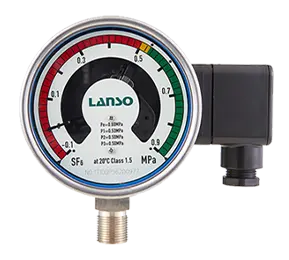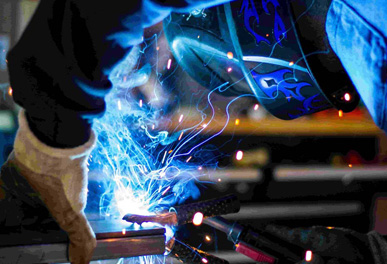1. Terms and definitions of SF6 relay
(1) Calibration of lock recovery value: when the SF6 relay is at zero pressure under ambient temperature, slowly inflate the SF6 relay at a certain speed. When the lock-up relay of the SF6 relay is activated, the pressure value under the current ambient temperature is recorded and is converted to the equivalent pressure value at 20°C. The equivalent pressure value at 20°C is the lock recovery value of the SF6 relay.
(2) Calibration of alarm reply value: continue to slowly inflate the SF6 relay at a certain speed. When the alarm relay of the density relay is activated, the pressure value under the current ambient temperature is recorded and converted into the equivalent pressure value at 20°C. The equivalent pressure value at 20°C is the alarm response value of the SF6 relay.
(3) Calibration of overpressure alarm value: continue to slowly inflate the SF6 relay at a certain speed. When a certain rated pressure setting value is exceeded, the overpressure alarm relay of the density relay is activated, and the pressure value under the current ambient temperature is recorded and converted to the equivalent pressure value at 20°C. The equivalent pressure value at 20°C is the overpressure alarm check value of the SF6 relay.
(4) Calibration of alarm value: under ambient temperature, when the pressure in the SF6 relay is greater than the alarm response value, exhaust slowly at a certain speed. When the alarm relay of the SF6 relay is activated, the pressure value at the current ambient temperature is recorded and converted to the equivalent pressure value at 20°C. The equivalent pressure value at 20°C is the alarm value of the SF6 gas density.
(5) Calibration of blocking value: continue to slowly deflate the SF6 relay at a certain speed. When the block relay of the SF6 relay is activated, the pressure value at the current ambient temperature is recorded and converted into the equivalent pressure value at 20°C. The equivalent pressure value at 20°C is the blocking value of the SF6 relay.
2. Types of SF6 relays
(1) Absolute pressure SF6 relay
Absolute pressure SF6 relay: a gas density relay marked with absolute pressure and taking absolute vacuum as the reference pressure.
(2) Relative pressure SF6 relay
Relative pressure SF6 relay: the indicator records the relative pressure, and the gas density relay is based on the ambient atmospheric pressure.
(3) Relatively mixed pressure SF6 relay
Relative mixed pressure SF6 relay: a kind of gas density relay whose indicator is the relative pressure, based on standard atmospheric pressure.
(4) Absolute mixed pressure SF6 relay
Absolute mixed pressure SF6 relay: this meter is an absolute pressure gas density relay, based on the ambient atmospheric pressure.
3. Zero position of SF6 relay
The zero scale starts from a certain positive pressure value and has an SF6 relay with a stop pin. In the absence of pressure, when the ambient temperature is 20°C and the atmospheric pressure is standard atmospheric pressure, before the boost pressure calibration and after the decompression calibration, the pointer points to the zero position.
4. The identification of SF6 relay types
For the SF6 relay whose scale starts from the lowest pressure value, in the absence of pressure, the zero position of the pointer should meet the following conditions before and after the boost pressure calibration:
(1) Absolute pressure type SF6 relay: when the ambient temperature is 20℃, the pointer must point to the local atmospheric pressure; when the ambient temperature is higher than 20℃, the pointer should point to a position lower than the local atmospheric pressure; when the ambient temperature is lower than 20℃, the pointer should point to a position higher than the local atmospheric pressure;
(2) Relative pressure type SF6 relay: when the ambient temperature is 20℃, the pointer must point to within the width of the zero scale line; when the ambient temperature is higher than 20℃, the pointer should point to the position below zero; when the ambient temperature is lower than 20℃, the pointer should point to the position above the zero position;
(3) Relative mixed pressure SF6 relay: when the ambient temperature is 20℃, the pointer must point to the difference between the current ambient atmospheric pressure minus the standard atmospheric pressure; when the ambient temperature is higher than 20℃, the pointer should point to the lower value of the difference position; when the ambient temperature is lower than 20°C, the pointer should point to the position above the difference;
(4) Absolute mixed pressure SF6 relay: when the ambient temperature is 20℃, the pointer must point to within the width of the 0.1MPa graduation line; when the ambient temperature is higher than 20℃, the pointer should point to the position below the 0.1MPa graduation line; when the ambient temperature is lower than 20°C, the pointer should point to the position above the 0.1MPa graduation line.







